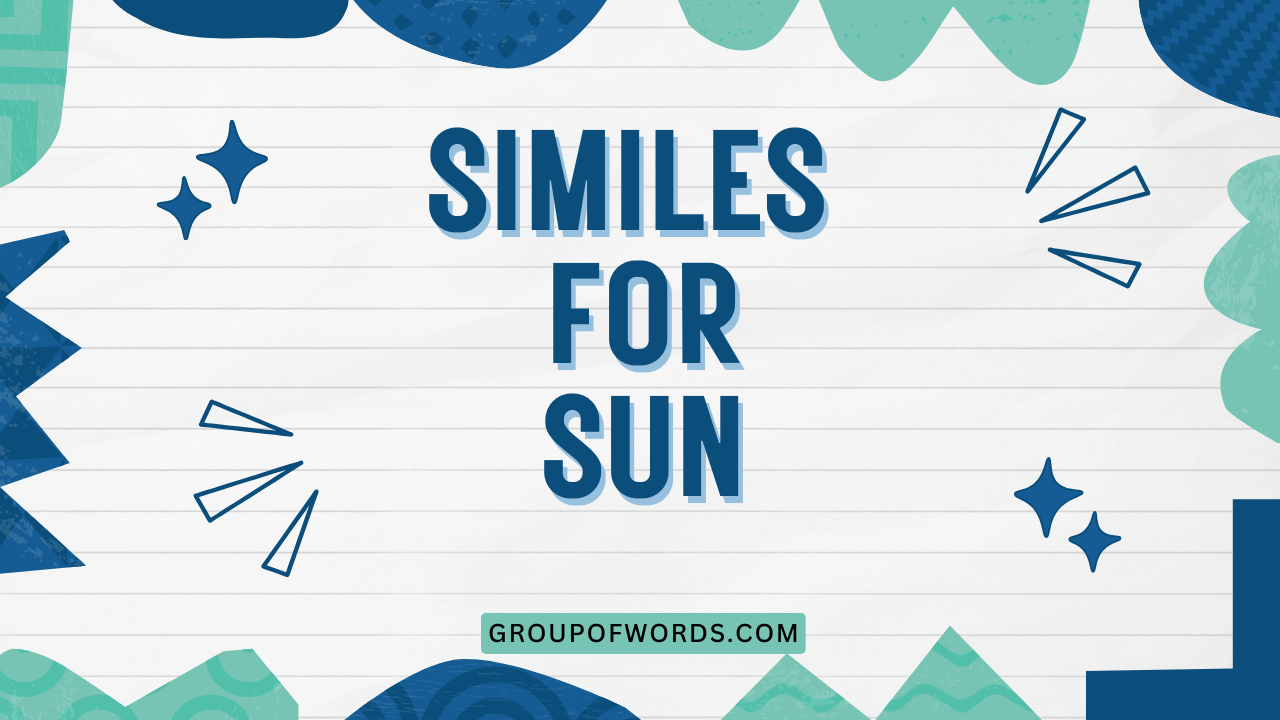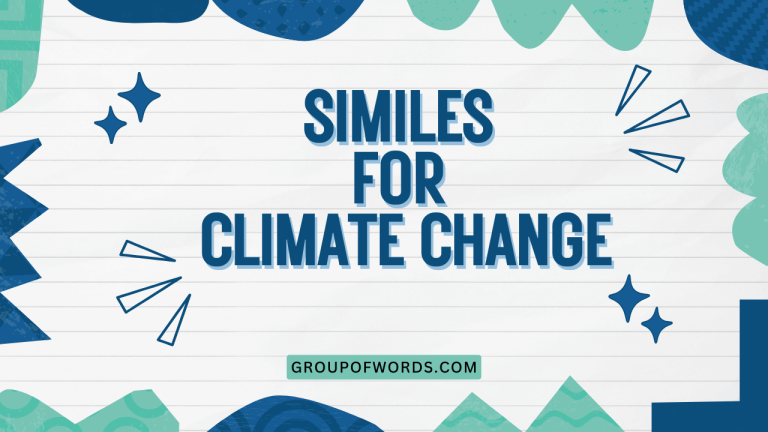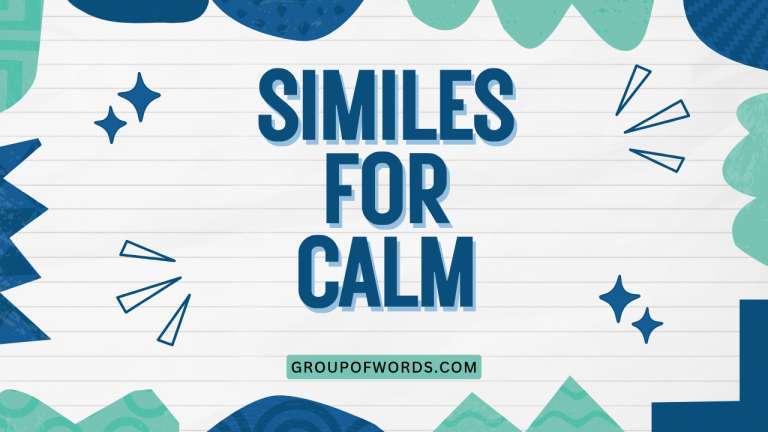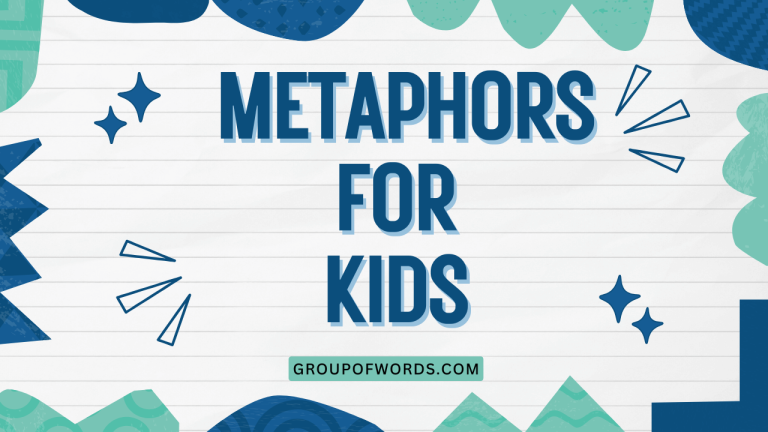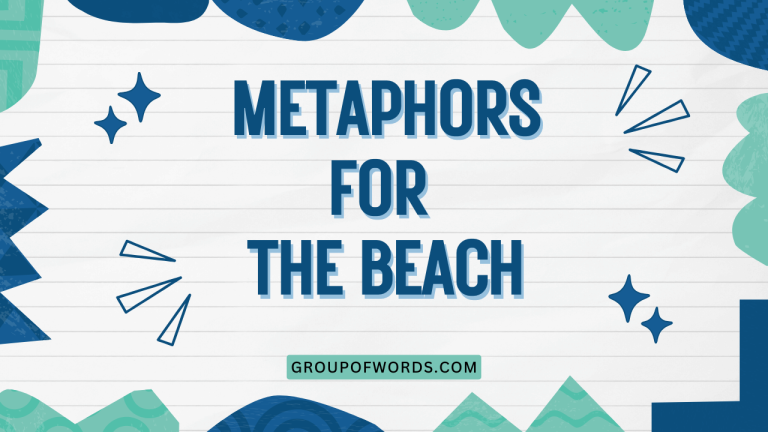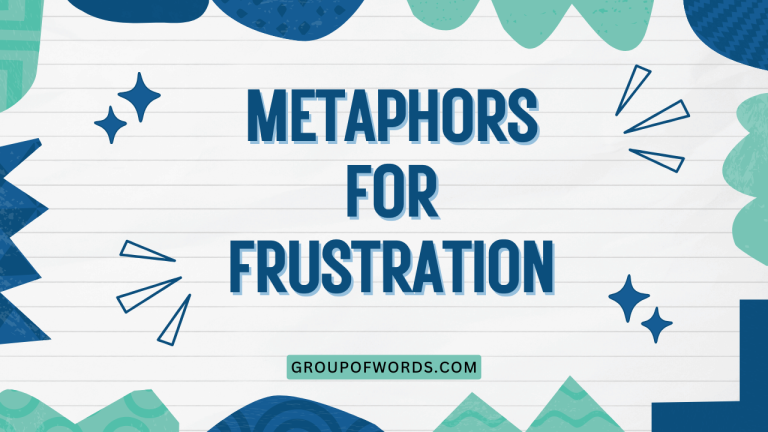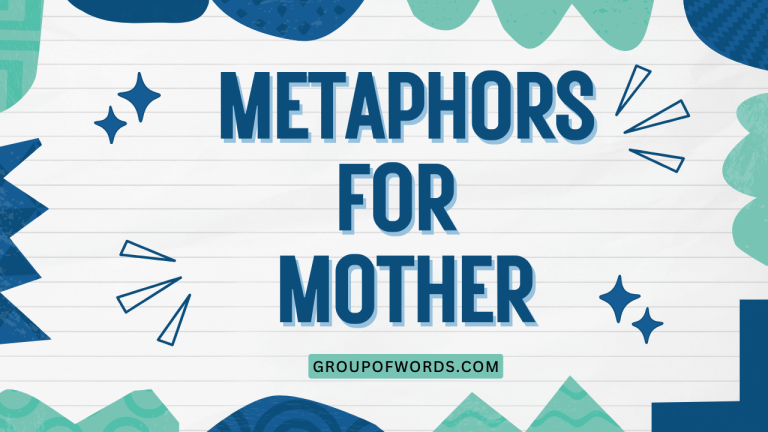Similes for Sun: Illuminating Your Language
Understanding and using similes effectively enhances your writing and communication skills. Similes, comparisons using “like” or “as,” add vividness and clarity to descriptions.
This article focuses specifically on similes related to the sun, exploring their structure, usage, and impact. Mastering sun-related similes can enrich your vocabulary and make your writing more engaging.
This guide is suitable for English language learners of all levels, from beginners to advanced speakers and writers.
Whether you’re crafting poetry, writing prose, or simply aiming to improve your everyday conversations, this comprehensive guide will provide the tools and knowledge you need to harness the power of similes. Through clear explanations, numerous examples, and practical exercises, you’ll learn how to use similes featuring the sun to create striking imagery and elevate your linguistic expression.
Table of Contents
- Introduction
- Definition of Simile
- Structural Breakdown of Similes
- Types of Sun Similes
- Examples of Sun Similes
- Usage Rules for Sun Similes
- Common Mistakes with Similes
- Practice Exercises
- Advanced Topics: Metaphor vs. Simile
- Frequently Asked Questions
- Conclusion
Definition of Simile
A simile is a figure of speech that directly compares two different things using the words “like” or “as.” The purpose of a simile is to create a vivid image or convey a particular feeling by associating one thing with another that shares a similar quality. Similes are essential tools in descriptive writing, poetry, and everyday conversation because they add depth and color to language.
Unlike metaphors, which imply that one thing *is* another, similes make an explicit comparison. This direct comparison makes similes easier to identify and understand, particularly for those learning the English language.
Similes function to enhance understanding by relating the unfamiliar to the familiar.
The function of a simile extends beyond mere comparison. It serves to evoke emotions, create a stronger mental image, and make writing more engaging and memorable.
By carefully choosing the object of comparison, a writer can subtly influence the reader’s perception and understanding of the subject.
Structural Breakdown of Similes
The basic structure of a simile involves three key components: the subject, the linking word (“like” or “as”), and the object of comparison. The subject is the thing being described, while the object of comparison is something different that shares a similar characteristic. The linking word connects these two elements, forming the simile.
Here’s a breakdown of the structure:
Subject + Linking Word + Object of Comparison
For example, in the simile “The sun is like a giant spotlight,” the subject is “the sun,” the linking word is “like,” and the object of comparison is “a giant spotlight.” This structure is consistent across all similes, although the complexity of the subject and object of comparison can vary.
Understanding this structure allows you to easily identify and create similes. You can manipulate the subject and object of comparison to achieve different effects, but the basic framework remains the same.
Recognizing this pattern also helps in analyzing the effectiveness of a simile in conveying its intended meaning.
Consider the following examples to further illustrate the structural breakdown:
- “Her smile was as bright as the sun.” (Subject: Her smile, Linking Word: as, Object of Comparison: the sun)
- “He shone like the sun on a summer day.” (Subject: He, Linking Word: like, Object of Comparison: the sun on a summer day)
- “The sun is as warm as a comforting embrace.” (Subject: The sun, Linking Word: as, Object of Comparison: a comforting embrace)
Types of Sun Similes
Sun similes can be categorized based on the aspects of the sun they emphasize. These categories help to organize and understand the different ways the sun can be used in comparative language.
Similes Describing Appearance
These similes focus on the visual characteristics of the sun, such as its color, shape, and overall appearance. They often use comparisons to objects that share similar visual qualities.
Similes Describing Intensity
These similes highlight the sun’s power, brightness, and heat. They often compare the sun to things that are strong, radiant, or intensely hot.
Similes Describing Feelings Associated with the Sun
These similes evoke the emotions and sensations that the sun can inspire, such as warmth, joy, or energy. They often use comparisons to experiences or objects that elicit similar feelings.
Examples of Sun Similes
Here are examples of sun similes organized by the categories described above. Each category provides diverse examples to illustrate the range of possibilities when using similes to describe the sun.
Appearance Examples
This section provides examples of similes that describe the sun’s appearance. These similes often focus on its color, shape, and how it looks at different times of the day.
The following table provides 30 examples of similes that describe the appearance of the sun. Each example uses either “like” or “as” to draw a comparison between the sun and another object, highlighting their shared visual qualities.
| # | Simile |
|---|---|
| 1 | The sun was like a giant orange in the sky. |
| 2 | The setting sun looked as red as a ripe tomato. |
| 3 | The morning sun was like a golden coin rising above the horizon. |
| 4 | The sun appeared as a fiery ball of gas. |
| 5 | The sun’s reflection on the water was like a shimmering path of gold. |
| 6 | The sun hung in the sky like a luminous pearl. |
| 7 | At midday, the sun was as white as a bleached bone. |
| 8 | The sun peeked through the clouds like a shy eye. |
| 9 | The sun looked like a melting pat of butter on the horizon. |
| 10 | The sun shone as round as a dinner plate. |
| 11 | The sun resembled a giant spotlight shining down on the earth. |
| 12 | The sun’s corona appeared like a halo around its fiery core. |
| 13 | The sun looked as distant as a memory. |
| 14 | The sun seemed like a painter’s brushstroke of light across the sky. |
| 15 | The sun was as bright as a new penny freshly minted. |
| 16 | The sun glowed like an ember in a dying fire. |
| 17 | The sun looked like a giant eye watching over the world. |
| 18 | The sun appeared as a beacon of hope in the darkness. |
| 19 | The sun shone like a polished shield in the heavens. |
| 20 | The sun’s rays spread out like golden fingers across the land. |
| 21 | The setting sun was as soft as a watercolor painting. |
| 22 | The sun resembled a celestial sunflower in full bloom. |
| 23 | The sun was like a spotlight that never sleeps. |
| 24 | The sun’s surface bubbled like molten gold. |
| 25 | The sun shone as steadily as a lighthouse beam. |
| 26 | The sun’s warmth felt like a gentle hand on my skin. |
| 27 | The sun’s reflection on the snow was like a thousand tiny diamonds. |
| 28 | The sun looked as peaceful as a sleeping giant. |
| 29 | The sun was like a painter with an endless canvas. |
| 30 | The sun appeared as a hole in the sky, letting light pour through. |
Intensity Examples
This section focuses on similes that describe the sun’s intensity. These similes emphasize its brightness, heat, and overall power.
The following table provides 30 examples of similes that describe the intensity of the sun. These examples use “like” or “as” to compare the sun’s power and brightness to other intense phenomena.
| # | Simile |
|---|---|
| 1 | The sun beat down like a blacksmith’s forge. |
| 2 | The sun’s heat was as intense as a furnace blast. |
| 3 | The sun shone like a thousand spotlights focused on one spot. |
| 4 | The sun’s rays felt as sharp as needles on my skin. |
| 5 | The sun burned like a magnifying glass focusing on dry leaves. |
| 6 | The sun was as blinding as a supernova. |
| 7 | The sun’s glare was like staring directly into a welding arc. |
| 8 | The sun’s heat radiated like a desert oven. |
| 9 | The sun’s power felt as immense as a nuclear reaction. |
| 10 | The sun shone with the intensity of a thousand suns. |
| 11 | The sun’s heat was like a physical weight pressing down on me. |
| 12 | The sun burned as fiercely as a dragon’s breath. |
| 13 | The sun’s light was as piercing as a laser beam. |
| 14 | The sun’s energy felt like an electric current coursing through the air. |
| 15 | The sun shone as brightly as a star about to explode. |
| 16 | The sun’s heat was like standing next to a roaring bonfire. |
| 17 | The sun’s intensity felt as relentless as a ticking clock. |
| 18 | The sun beat down like a hammer on an anvil. |
| 19 | The sun’s rays were as scorching as embers from a fire. |
| 20 | The sun shone with the force of a collapsing star. |
| 21 | The sun’s heat felt like a hot iron pressed against my skin. |
| 22 | The sun burned as relentlessly as a desert sun. |
| 23 | The sun’s light was as sharp as broken glass. |
| 24 | The sun’s energy felt like a surge of electricity. |
| 25 | The sun shone as powerfully as a god’s gaze. |
| 26 | The sun’s heat was like being trapped in a sauna. |
| 27 | The sun’s intensity felt as oppressive as a heavy blanket. |
| 28 | The sun beat down like a drumbeat in the sky. |
| 29 | The sun’s rays were as intense as a spotlight on a stage. |
| 30 | The sun shone with the fury of a thousand storms. |
Feeling Examples
This section provides similes that evoke feelings and sensations associated with the sun, such as warmth, joy, or energy. These similes connect the sun to emotional or sensory experiences.
The following table provides 30 examples of similes that describe the feelings associated with the sun. The examples use “like” or “as” to compare the sun’s effects to various emotional and sensory experiences.
| # | Simile |
|---|---|
| 1 | The sun’s warmth felt like a comforting hug. |
| 2 | The sun’s rays were as welcome as a friendly smile. |
| 3 | The sun’s energy felt like a surge of optimism. |
| 4 | The sun’s light was as uplifting as a symphony. |
| 5 | The sun’s presence felt like a promise of a new beginning. |
| 6 | The sun’s warmth was as soothing as a gentle breeze. |
| 7 | The sun’s rays felt like a kiss on my skin. |
| 8 | The sun’s energy was as invigorating as a morning swim. |
| 9 | The sun’s light felt like a warm embrace. |
| 10 | The sun’s presence was as comforting as a familiar song. |
| 11 | The sun’s warmth felt like a mother’s love. |
| 12 | The sun’s rays were as cheerful as a child’s laughter. |
| 13 | The sun’s energy was as motivating as a pep talk. |
| 14 | The sun’s light was as inspiring as a work of art. |
| 15 | The sun’s presence felt like a guardian angel watching over me. |
| 16 | The sun’s warmth was as relieving as a cool drink on a hot day. |
| 17 | The sun’s rays felt like a gentle reminder of life’s beauty. |
| 18 | The sun’s energy was as revitalizing as a good night’s sleep. |
| 19 | The sun’s light felt like a beacon guiding me forward. |
| 20 | The sun’s presence was as reassuring as a steady heartbeat. |
| 21 | The sun’s warmth felt like a celebration of life. |
| 22 | The sun’s rays were as comforting as a warm fire on a cold night. |
| 23 | The sun’s energy was as empowering as a superhero’s strength. |
| 24 | The sun’s light was as illuminating as a great idea. |
| 25 | The sun’s presence felt like a silent blessing. |
| 26 | The sun’s warmth was as inviting as a cozy home. |
| 27 | The sun’s rays felt like a gentle caress. |
| 28 | The sun’s energy was as liberating as a bird taking flight. |
| 29 | The sun’s light felt like a gentle hand guiding me. |
| 30 | The sun’s presence was as grounding as the earth beneath my feet. |
Usage Rules for Sun Similes
When using sun similes, it’s important to follow certain rules to ensure clarity and effectiveness. These rules relate to the appropriateness of the comparison, the accuracy of the description, and the overall impact of the simile on the reader.
1. Choose Relevant Comparisons: The object of comparison should share a relevant characteristic with the sun. For example, comparing the sun’s brightness to a light bulb is more effective than comparing it to a rock.
2. Ensure Clarity: The simile should be easy to understand. Avoid obscure or overly complex comparisons that might confuse the reader.
3. Consider the Context: The appropriateness of a simile depends on the context in which it is used. A simile that works well in a poem might not be suitable for a scientific report.
4. Avoid Clichés: While similes can be powerful, overused comparisons (clichés) can weaken your writing. Try to come up with fresh and original similes.
5. Maintain Consistency: Ensure that the simile aligns with the overall tone and style of your writing. A jarring or inconsistent simile can disrupt the reader’s experience.
6. Focus on Impact: The primary goal of a simile is to create a vivid image or convey a particular feeling. Choose similes that have the greatest impact on the reader’s imagination.
7. Be Specific: The more specific your comparison, the more effective your simile will be. “The sun was as hot as fire” is less effective than “The sun was as hot as the surface of Mercury.”
Common Mistakes with Similes
Even experienced writers can make mistakes when using similes. Here are some common errors to avoid:
1. Using Metaphors Instead of Similes: Confusing similes with metaphors is a common mistake. Remember that similes use “like” or “as” for a direct comparison, while metaphors imply that one thing is another.
Incorrect: The sun was a giant ball of fire. (Metaphor)
Correct: The sun was like a giant ball of fire. (Simile)
2. Using Clichéd Similes: Overused similes can make your writing seem unoriginal and dull.
Clichéd: The sun was as bright as the sun. (Redundant)
Better: The sun was as bright as a welder’s torch.
3. Illogical Comparisons: The object of comparison should have a clear and logical connection to the subject.
Incorrect: The sun was like a refrigerator. (No logical connection)
Correct: The sun was like a furnace. (Logical connection based on heat)
4. Overusing Similes: Too many similes in a short passage can overwhelm the reader and detract from your writing.
Overuse: The sun was like a giant orange, shining like a spotlight, and feeling as warm as a blanket.
Better: The sun, like a giant orange, shone warmly in the sky.
5. Mixing Metaphors and Similes: Maintaining consistency is crucial. Don’t switch between metaphors and similes within the same comparison.
Incorrect: The sun was a spotlight, like a furnace in the sky.
Correct: The sun was like a spotlight, similar to a furnace in the sky.
Practice Exercises
Test your understanding of sun similes with these practice exercises. Each exercise focuses on a different aspect of simile usage.
Exercise 1: Identify the Simile
In each of the following sentences, identify the simile. Underline the simile and identify the subject and object of comparison.
Instructions: For each sentence, identify the simile, the subject, and the object of comparison. Write your answers in the table below.
| # | Sentence | Simile | Subject | Object of Comparison |
|---|---|---|---|---|
| 1 | The sun was as hot as a furnace. | |||
| 2 | Her smile was like the sun after a storm. | |||
| 3 | The sun shone like a spotlight on the stage. | |||
| 4 | The sun’s rays were as warm as a comforting embrace. | |||
| 5 | The sun looked like a giant orange in the sky. | |||
| 6 | The sun’s heat felt as intense as a desert oven. | |||
| 7 | The sun was as yellow as a lemon. | |||
| 8 | The sun’s light felt like a gentle hand on my face. | |||
| 9 | The sun appeared as a beacon of hope. | |||
| 10 | The sun was like a painter with an endless canvas. |
Answer Key:
| # | Sentence | Simile | Subject | Object of Comparison |
|---|---|---|---|---|
| 1 | The sun was as hot as a furnace. | as hot as a furnace | The sun | a furnace |
| 2 | Her smile was like the sun after a storm. | like the sun after a storm | Her smile | the sun after a storm |
| 3 | The sun shone like a spotlight on the stage. | like a spotlight on the stage | The sun | a spotlight on the stage |
| 4 | The sun’s rays were as warm as a comforting embrace. | as warm as a comforting embrace | The sun’s rays | a comforting embrace |
| 5 | The sun looked like a giant orange in the sky. | like a giant orange in the sky | The sun | a giant orange in the sky |
| 6 | The sun’s heat felt as intense as a desert oven. | as intense as a desert oven | The sun’s heat | a desert oven |
| 7 | The sun was as yellow as a lemon. | as yellow as a lemon | The sun | a lemon |
| 8 | The sun’s light felt like a gentle hand on my face. | like a gentle hand on my face | The sun’s light | a gentle hand on my face |
| 9 | The sun appeared as a beacon of hope. | as a beacon of hope | The sun | a beacon of hope |
| 10 | The sun was like a painter with an endless canvas. | like a painter with an endless canvas | The sun | a painter with an endless canvas |
Exercise 2: Complete the Simile
Complete each of the following sentences by adding an appropriate object of comparison to create a simile using “like” or “as.”
Instructions: Finish the similes in the sentences below to make a complete and meaningful comparison. Write your answers in the table below.
| # | Incomplete Sentence | Completed Simile |
|---|---|---|
| 1 | The sun was as bright as __________. | |
| 2 | The sun’s heat felt like __________. | |
| 3 | The sun shone like __________. | |
| 4 | The sun’s rays were as warm as __________. | |
| 5 | The sun looked like __________. | |
| 6 | The sun felt as comforting as __________. | |
| 7 | The sun sparkled like __________. | |
| 8 | The sun was as intense as __________. | |
| 9 | The sun appeared as radiant as __________. | |
| 10 | The sun was like __________. |
Answer Key: (Possible answers – there may be other correct options)
| # | Incomplete Sentence | Completed Simile |
|---|---|---|
| 1 | The sun was as bright as __________. | The sun was as bright as a diamond. |
| 2 | The sun’s heat felt like __________. | The sun’s heat felt like a furnace. |
| 3 | The sun shone like __________. | The sun shone like a beacon. |
| 4 | The sun’s rays were as warm as __________. | The sun’s rays were as warm as a summer day. |
| 5 | The sun looked like __________. | The sun looked like a golden coin. |
| 6 | The sun felt as comforting as __________. | The sun felt as comforting as a warm blanket. |
| 7 | The sun sparkled like __________. | The sun sparkled like glitter. |
| 8 | The sun was as intense as __________. | The sun was as intense as a spotlight. |
| 9 | The sun appeared as radiant as __________. | The sun appeared as radiant as a god. |
| 10 | The sun was like __________. | The sun was like a life-giver. |
Exercise 3: Write Your Own Simile
Write your own similes for the sun based on the given prompts. Try to be creative and use original comparisons.
Instructions: Write an original simile for each prompt. Aim for creative and descriptive comparisons. Write your answers in the table below.
| # | Prompt | Your Simile |
|---|---|---|
| 1 | Describe the color of the setting sun. | |
| 2 | Describe the feeling of the sun on your skin. | |
| 3 | Describe the intensity of the midday sun. | |
| 4 | Describe the shape of the sun. | |
| 5 | Describe the sun’s energy. | |
| 6 | Describe the sun’s light. | |
| 7 | Describe the sun’s warmth. | |
| 8 | Describe the sun’s appearance behind clouds. | |
| 9 | Describe the sun in a desert landscape. | |
| 10 | Describe the sun reflecting on water. |
Answer Key: (These are example answers; creativity is encouraged!)
| # | Prompt | Your Simile |
|---|---|---|
| 1 | Describe the color of the setting sun. | The setting sun was as crimson as a spilled glass of wine. |
| 2 | Describe the feeling of the sun on your skin. | The sun felt like a thousand tiny fingers gently warming my skin. |
| 3 | Describe the intensity of the midday sun. | The midday sun was as intense as a magnifying glass focusing on paper. |
| 4 | Describe the shape of the sun. | The sun was like a perfectly round coin in the sky’s vast purse. |
| 5 | Describe the sun’s energy. | The sun’s energy felt like a surge of electricity through my veins. |
| 6 | Describe the sun’s light. | The sun’s light was as golden as honey dripping from a comb. |
| 7 | Describe the sun’s warmth. | The sun’s warmth was like a loving embrace on a chilly morning. |
| 8 | Describe the sun’s appearance behind clouds. | The sun behind the clouds looked like a hidden treasure barely glimpsed. |
| 9 | Describe the sun in a desert landscape. | In the desert, the sun was like a watchful eye, never blinking. |
| 10 | Describe the sun reflecting on water. | The sun reflecting on the water was like a million diamonds scattered across the surface. |
Advanced Topics: Metaphor vs. Simile
While both similes and metaphors are figures of speech that make comparisons, they differ in their directness. A simile makes an explicit comparison using “like” or “as,” while a metaphor implies a comparison without using these words. Understanding this difference is crucial for advanced language learners.
Simile: The sun is like a giant spotlight.
Metaphor: The sun is a giant spotlight.
In the simile, the sun is being compared to a spotlight, but it is not being identified as one. In the metaphor, the sun is directly identified as a spotlight, creating a stronger, more figurative comparison.
Metaphors often require more interpretation and can add depth and complexity to writing.
Another key difference lies in the level of abstraction. Sim
iles tend to be more concrete, offering a direct comparison that is easier to grasp.
Metaphors, on the other hand, can be more abstract and open to interpretation, inviting the reader to make deeper connections.
Consider these examples:
Simile: The sun’s rays are like golden threads weaving through the clouds.
Metaphor: The sun’s rays are golden threads weaving through the clouds.
The metaphor creates a more vivid and imaginative image, suggesting a direct connection between the sun’s rays and golden threads. This requires the reader to engage more actively with the text, enriching their understanding and appreciation.
Frequently Asked Questions
What is the main purpose of using similes?
The main purpose of using similes is to enhance descriptive writing by creating vivid images and conveying specific feelings or ideas through comparison. Similes help make abstract concepts more concrete and relatable.
How do I avoid using clichéd similes?
To avoid using clichéd similes, try to think beyond the obvious comparisons. Brainstorm unique and original connections between the subject and object of comparison.
The more specific and unusual your simile, the more effective it will be.
Can a simile be too complex?
Yes, a simile can be too complex if it becomes difficult for the reader to understand the comparison being made. A good simile should be clear and concise, adding to the reader’s understanding rather than confusing them.
Is it okay to use similes in formal writing?
While similes are more commonly used in creative writing, they can be appropriate in formal writing if they enhance clarity and understanding without being overly decorative. Use them judiciously and ensure they align with the tone and style of the piece.
How can I improve my ability to create effective similes?
To improve your ability to create effective similes, practice observing the world around you and making connections between different things. Read widely to expose yourself to a variety of writing styles and techniques.
Experiment with different comparisons and ask for feedback on your similes.
What is the difference between a simile and an analogy?
While both similes and analogies involve comparison, an analogy is a more extensive and complex comparison that aims to explain the relationship between two things. A simile is a brief comparison used for descriptive purposes, while an analogy is used for explanatory purposes.
How do cultural differences affect the understanding of similes?
Cultural differences can significantly affect the understanding of similes because the objects and concepts used in comparisons may have different meanings or connotations in different cultures. It’s important to be aware of your audience and choose comparisons that are likely to be understood and appreciated by them.
Conclusion
Mastering the art of using similes, particularly those related to the sun, can significantly enhance your writing and communication skills. By understanding the structure, types, and usage rules of similes, you can create vivid images, convey emotions, and make your language more engaging and memorable.
Through the examples and exercises provided in this guide, you have gained practical experience in identifying, completing, and creating sun similes. Remember to practice regularly and experiment with different comparisons to develop your own unique style.
With dedication and creativity, you can harness the power of similes to illuminate your language and captivate your audience.
